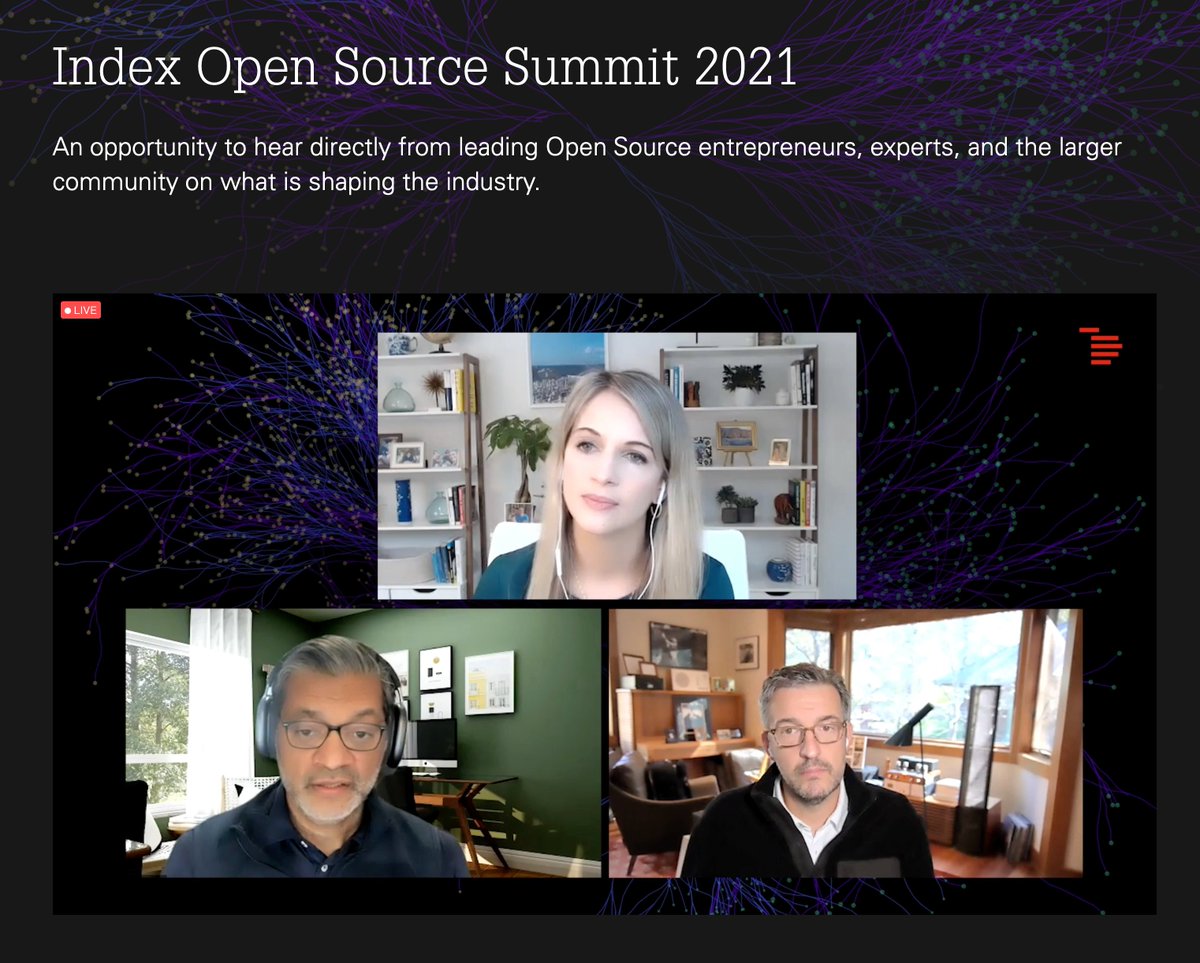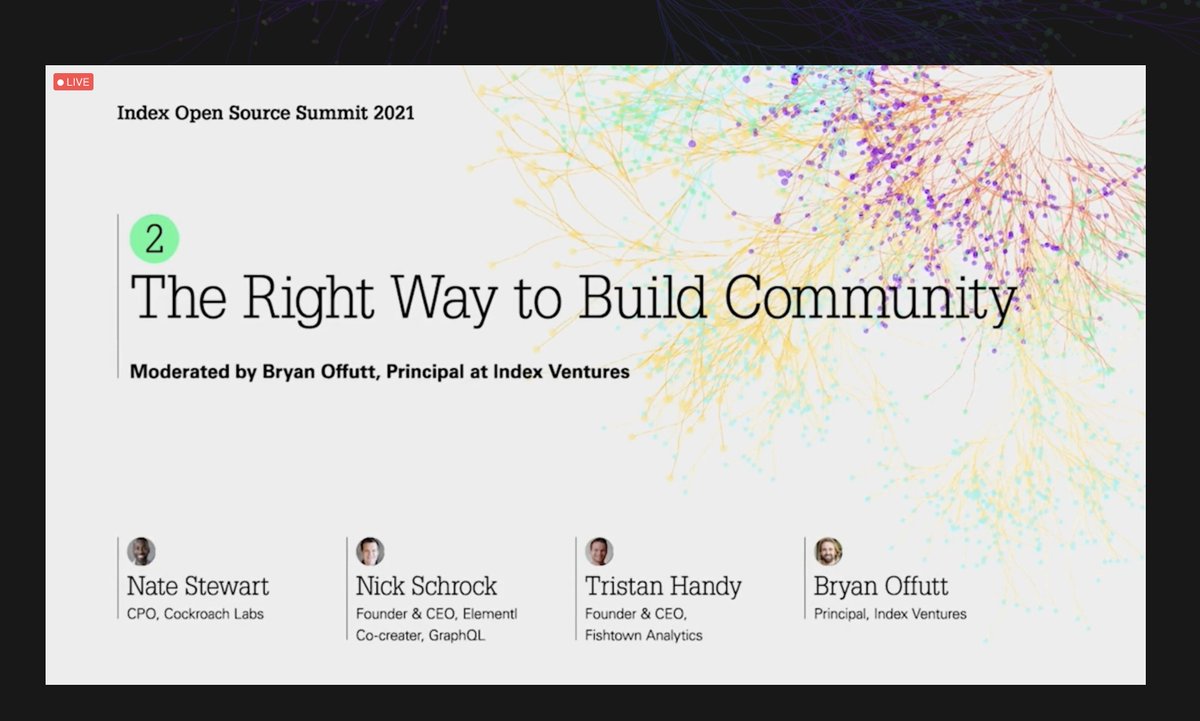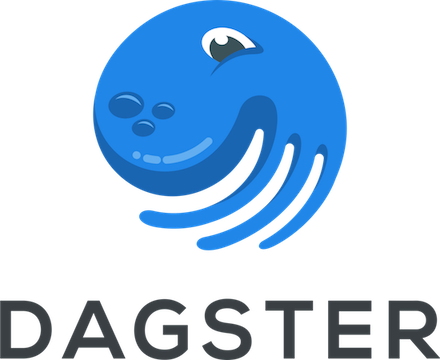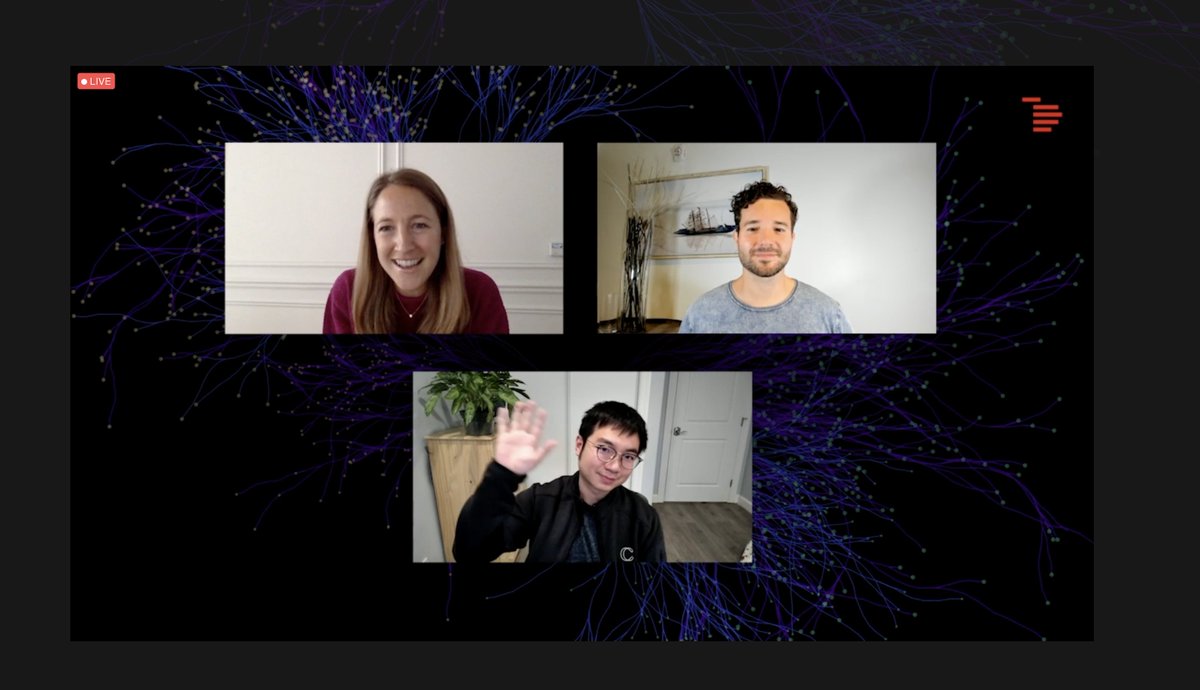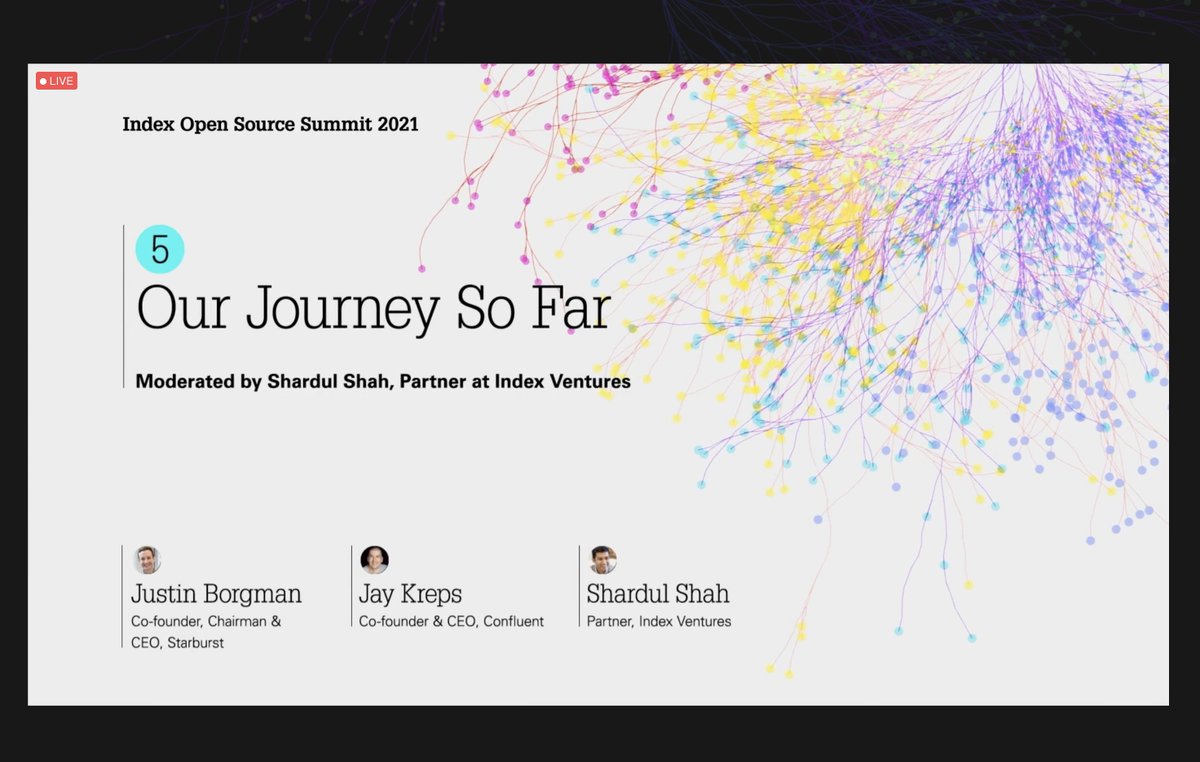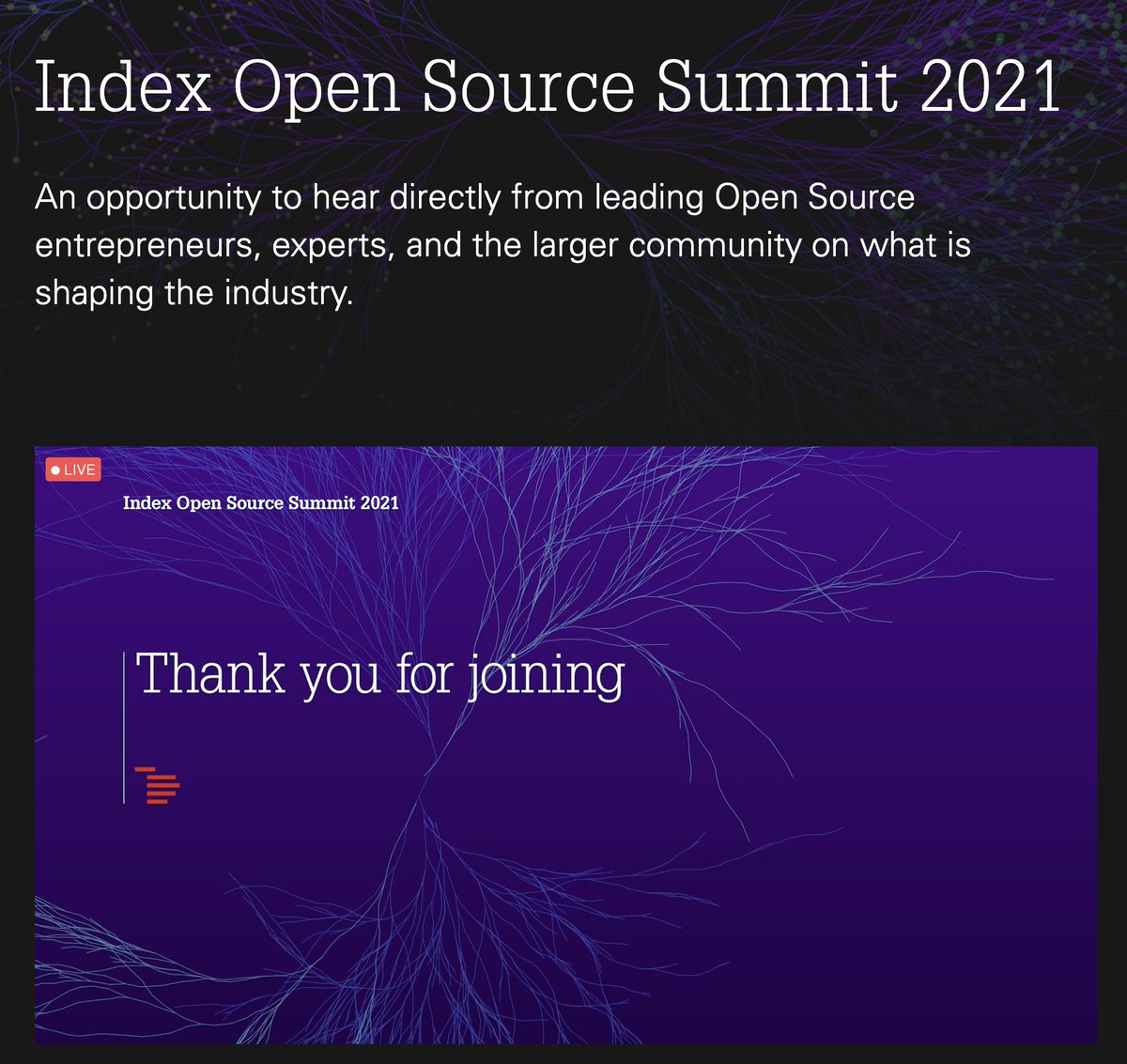Here's a thread with notes from quotes by great folks today @IndexVentures Open Source Summit 2021: 

"For many software entrepreneurs, open source is a short-cut for broad-based adoption" - @mavolpi
"At @MongoDB, we have really viewed open source as a distribution strategy, not as a contribution mechanism. We also believe that the best way to monetize open source is offering a cloud service... today, we see a $300M+ ARR business in the cloud" - @dittycheria
"Over the life of our company, we have invested $700M+ in R&D into building our free/open source product. We do not think it is fair for others to profit from this, which is what drove our license change to SSPL" - @dittycheria
"Open source gets tricky for (COSS) founders in getting the timing right across phases of adoption, product, monetization.. in the first phase, you focus on adoption, second phase is to obtain product-market-fit, the third phase is to integrate/offer a cloud service" - @mavolpi
"Writing software (development) vs. Running software (cloud) are fundamentally very very different skills!" - @mavolpi
"Developers love free technology, but companies have to navigate the commercialization evolution of open source carefully" - @JessIandiorio
"Some of the next-generation areas of (COSS) innovation/exploration are in unifying workflows and providing business connectivity across many use cases. Front-end tech is also an exciting area, and AI/ML platforms that are more as extension to classical data science." @mavolpi
"Another area to explore promising (COSS) opportunities is to be both a tool and a toolkit (enabling extensions) to enable a developer ecosystem and data-centricity." - @dittycheria
"As we saw more success, cloud providers felt the need to use our IP to build a managed service without our involvement.. and we did not think that was fair. This prompted us to change from AGPL to SSPL.. and we did try to work with the OSI." - @dittycheria
"At the end of the day, we felt and have seen that developers really just care about the question - does this solve my problem? can I see the code? ... fast-forward two years, we've seen 50M downloads in the last 2 years ..more than in the last decade combined!" - @dittycheria
"This week, we just announced relationships with Tencent and Alibaba in China as major cloud platforms, and we do not believe these partnerships would have materialized without the benefits of the SSPL" - @dittycheria
"We've also seen different clouds behave differently around partnering with (COSS) companies.. even globally, as Dev indicates. But when you have ONE player in the market (AWS) looking to capture all/as much value as they can, licensing changes are a natural evolution" - @mavolpi
"In terms of partnership with clouds, we have productive relationships with AWS, Azure, Google, and several clouds in China. What helped us was starting with AGPL as a license, and SSPL has actually strengthened these collaborations" - @dittycheria
"99%~ of @MongoDB code was written by our employees. Due to owning all of the IP, we feel very comfortable making the license change we did." - @dittycheria
"Adding to what Mike said, we are not just trying to capture all the value. 60%~ of our IP was focused on our free/open product. We are happy to see @elastic and others start to embrace our SSPL model. - @dittycheria
"Changing technology licenses is a sensitive area.. akin to changing a marriage agreement between humans. Be cautious and thoughtful about changes, because changing strategies later on in your journey is painful!" - @mavolpi
"Not every business model has to be based on an open source core.. be intentional and thoughtful as well about the model you choose from the beginning. Open core is just one of many valid approaches." - @dittycheria
"People confuse community engagement and adoption with GitHub stars... I do not think this is the right metric to look at. You really don't have a community with a one-dimensional engagement.. you really need a bi-directional engagement to discover PMF." - @mavolpi
"Per 'unit' of software, a (COSS) company monetizes less (than as a closed-core business)! Therefore, you need to counterbalance this by creating vibrant communities, by millions of people!" - @mavolpi
In response to what he would advise @ajassy on (COSS) / open core companies: "When end users get the best possible product, the market grows in a positive sum way! My advice to AWS would be to make the pie bigger vs. maximizing their slice." - @mavolpi 

Next up, moderated by @BryanOffutt ! = @Nate_Stewart ( @CockroachDB), @schrockn ( @dagsterio), @jthandy ( @getdbt)
"How you market yourself dictates the kind of community you build" - @schrockn
"One of the things that changed with our community is that we saw a lot more people giving detailed product feedback, so we started to use the community as a mechanism to focus on problems that we needed to solve!" - @Nate_Stewart
"Another great thing we noticed is that the open source community around @CockroachDB has contributed a great deal of integration and extensibility, making the product stronger." - @Nate_Stewart
"In the beginning of building community, we had to do a lot of doing things that did not scale -- meeting people in person, spending 1:1 time with champions... today, we have around 10,000+ people in our Slack. This has qualitatively changed our interaction approach." - @jthandy
"Today, we are teaching our community how to do things in a different way.. similar to the early transition to DevOps. This has been really rewarding for all." - @jthandy
"On growing pains, we have seen a new role materialize around Community Management.. setting SLA question expectations, engineers getting nerd-swiped is tricky to navigate, exploring the right way to facilitate conversations and enable self-service." - @Nate_Stewart
"We have seen similar challenges... at the 10K+ community member scale, we have had to invest more in on-boarding and documentation in particular. Docs had always been an important factor, but now it is a CORE part of our community/conversation UX!" - @jthandy
"Self-paced learning is another thing we are doing to enable community self-service.. a kind of university for @CockroachDB -- another thing we do is to build out a full-time DevRel team." - @Nate_Stewart
On thinking about how to make community approachable: "We are at a nice phase, since we can still get away with doing things that don't scale. This has been almost deliberate. We literally reach out to almost every new community participant to add a human element!" - @schrockn
"Even thinking about how to make your community brand more welcoming and thoughtful has helped us a lot!" - @schrockn 

"We have gone as far as running emoji analytics to engage our community better! Injecting personality. Being intentionally effusive. This is so key!" - @jthandy
"A few things we do to make our community more approachable: have a clear contribution guide (how to submit a PR, what tone you should use, being respectful/nice). Another thing we do is to run tag recommendations on great "first issues" for new contributors." - @Nate_Stewart
On how to go about highlighting community members: "One thing that we do is to get at least 1 or 2 people from our community to join and engage in our regular community meetings" - @schrockn
"We try to identify and acknowledge a community member 'of the day' as another way of recognizing valuable and engaged people" - @jthandy
"We also work on join-marketing as another way to engage community members... use cases and architecture solutions can serve as a great way to create new blog posts and content collaboratively with your community" - @Nate_Stewart
"On COSS, there are sometimes tensions about "what is free vs. paid", what advice would you give to manage this balance?" - @BryanOffutt ....
"For us, we work to always make our open/free version of @CockroachDB include everything a developer needs to be successful under any condition. For more complex enterprise use cases, we work to build IP and features in our commercial product." - @Nate_Stewart
"Don't believe any founder who says they have everything figured out in terms of open/closed decisioning. It is very important to set clear expectations with your community and avoid virtue signaling!" - @schrockn
"I think the @HashiCorp team has done a really great job in setting expectations with core principles... if it is technical complexity, that goes in the open domain.. if it organizational complexity, that goes in the commercial domain." @schrockn
"For us, the reason we chose to go with the open source path from the beginning is that we want to ensure the success of the project and community were prioritized OVER the success of the company... ideally both, but if we had to choose, this is our core principle." - @jthandy
"One of the things we see changing with this question is with @CockroachDB as a cloud service.. in a lot of ways, these complex decisions become more simple to make." - @Nate_Stewart
"On maybe creating a perverse incentive and moral hazard... does it become tricky to leave Ops functionality out of the core?" - @schrockn ... "We actually want to make @CockroachDB easy to run with the open core, thanks to @kubernetesio, this is not as hard!" - @Nate_Stewart
"On building community, what did you wish you knew that you now know?" - @BryanOffutt ...
"Building an open community is very different than building a closed-loop community" - @schrockn
"What I realize now is that no one really knows what they are doing.. there is still a great deal of exploration. That has been hard for us to come to terms with. Being friendly and doing the basics WELL is important! Building open community is somewhat "ungoverned'" - @jthandy
"What we have learned is critical is education, investing in a university, documentation.. anything you can do to make your community users completely self-sufficiently successful.. this unlocks a huge multiplier for community growth" - @Nate_Stewart
Next session is @IndexVentures' Jacob Jofe moderating "How to build great revenue teams (in COSS)" with @efr_schultz ( @confluentinc president) and Justin Hoffman (VP WW Sales @elastic)
"It is critical for Sales to partner closely with Marketing teams and drive similar incentives.. one of the things we did about a year ago is starting our SDR team inside the sales org, and then evolved that as an execution arm for the marketing org." - Justin
"The partnership between Marketing and sales/GTM is absolutely critical. Holding both sides accountable is key. In the early days, the role of marketing ( @ConfluentInc) was to capture the demand of the Kafka open source community" - @efr_schultz
"We also have a pretty robust SDR org. I believe that SDRs can reside in either Sales or Mktg orgs.. there are trade-offs, but the collaboration and partnership between Sales<>Marketing remains a critical ingredient for us" - @efr_schultz
"In 2020, we made a massive Customer Success investment, growing from 2019 as an initial pilot. @confluentinc has a customer base that's pretty skewed towards the high-end of the enterprise market...we also grouped pre/post sales under customer success" - @efr_schultz
"We have always thought about making Customer Success a critical top-of-mind org in collaboration with Solutions Architecture and AEs/Field sales.. almost from day one. As a (COSS) company, we had to really earn trust and respect from our community" - Justin Hoffman @elastic
"In addition to customer success, we have a group of skilled folks called 'At Scale' to help progress the higher end of the long-tail in our @elastic customer base.. Today's $10-20K deal is tomorrow's $500K-$1M customer" - Justin Hoffman, VP WW Sales
On driving a Cloud offering... "Initially, @confluentinc customers running @apachekafka were very sophisticated.. but they needed security, scalability, operability at the platform level.. we needed to provide a different kind of offering for a broader market" - @efr_schultz
"By delivering a Kafka cloud service, we were also able to meet and engage customers earlier on in their journey... and even targeting SMB/mid-market customers that can grow with us over time.. this has been a strategic move for us" - @efr_schultz
"Balancing the right data cohering of segmenting of customers is also easier with cloud" - @efr_schultz
"For us, we were deliberate + planned about bringing ElasticSearch to the cloud from day one of the company... over time, we have also partnered with all of the major cloud providers, and even regional players.. being cloud-agnostic is key" - Justin Hoffman, VP WW Sales @elastic
"Much like we have always done with the open source community, we have been very engaged with trial/free users to help on-board them to our cloud service. This also allows us to contextual and deliver the right and relevant messaging" - Justin
On sales practices around feeding insights to product teams: "We deliver feature/improvement requests from sales to product.. similar to how the OSS community provides insights. We have things like Top 10 biggest features lists + ensuring customer voice" -Justin Hoffman @elastic
"For us, we think about delivering (COSS) product insights both strategically and tactically.. we also capture field feature requests and attach those to specific customer accounts to measure impact against pipeline and overall revenue growth" - @efr_schultz
Next up! @SarahRCannon moderating @gridai_'s @_willfalcon and @CovariantAI's @peterxichen: How ML/AI are transforming the future of COSS
"Open source is really fundamental in the ML/AI ecosystem on many levels: because of this culture of transparency of openness, we have incredible leverage. Internet companies investing hundreds of millions in model development, then giving the models away..!" - @_willfalcon
"On ML research and OSS communities.. It feels like there is a cultural link that they both share openness. Even many conferences have embraced open publications on cutting edge research, underpinning a lot of ML research overall" - @peterxichen
"Another thing that is resulting as a consequence of this, ML research progresses MUCH faster than most other fields... there are so many new techniques to invent, but this open culture is very core to accelerating innovation" - @peterxichen
"On creating differentiated IP in the ML world, there are two ways of thinking about this: What is the model itself, and how to run the models. On models themselves, many models are open by default, so one way could be thinking of the base model as a library" - @peterxichen
"Another way to evolve towards IP, companies have to use base foundations with models and build towards data collection and customer use cases, which is where data+model creates business value" @_willfalcon
"With OSS frameworks and ML models, focusing on efficient testing, performance/speed of model execution and stability.. these are areas for commercial IP development" - @_willfalcon
"The rate of innovation in ML model development, iteration and speed overall is moving incredibly fast." - @peterxichen
"The core idea behind modern ML (DL) is to build a very expressive model that can be applied to a wide range of data/parameters.. and almost decoupling model performance scaling from the data applicability. It is now possible to build one model for 10K+ apps" - @peterxichen
"Transformers are expensive operations.. it feels like we should improve the state-of-the-art around more efficient model development that does not require an enormous level of compute/data.. these ideas are what drove the invention of bloom filters in the 1970s" - @_willfalcon
On ML commercialization approaches in the future: "The differences, for us, are not that great.. models represent a library/baseline and the app/product represents the incorporation of a set of use cases and data optimizations/applications" - @peterxichen
"It might be useful to look at how Google/FB commercialize ML models... their news feeds work better, their search results are better.. the do not directly monetize the models" - @_willfalcon
"Consumption based monetization of ML models definitely feels like the way to go, today.. but it's important to look at trading fees in finance.. in the old days, they were expensive.. today, they are somewhat non-existent" - @_willfalcon
"For one maybe unique element of ML monetization, there is a very tight feedback look on improvement and adding customer value. It feels almost like a direct vs. indirect feedback loop. If someone uses the system, predictions can inherently improve training data" - @peterxichen
Should some ML NOT be open source?... "This is a really good question, and maybe one that we don't yet have a robust answer to, yet. Perhaps the best known example is @OpenAI has identified a misuse of a technology based on careful/intentional release cadences" - @peterxichen
"Another thought on this is: when possible, ML models that are understood to inherently be racially biased, for e.g., should just not be released.. of course, this is very hard to enforce globally" - @_willfalcon
Last session! Moderated by @IndexVentures' Shardul Shah ... @jaykreps co-founder of @confluentinc and @JustinBorgman co-founder of @starburstdata
"We were developing and scaling @apachekafka for 5~ years inside @LinkedIn before launching and growing the open source community.. this internal incubation helped us dog-food and build a truly scalable and useful technology." - @jaykreps
"On thinking timing re: when to leave @LinkedIn and found @confluentinc, I felt we were probably overly analytical and a bit slow, but our primary driver was seeing the broader use and adoption of Kafka in the industry + with enterprise usage" - @jaykreps
"For us, @Teradata and @Facebook were early motivators for the @trinodb / @prestodb ecosystem ... we felt that building @starburstdata to help enterprises with security/auth requirements was a major driver of focus" - @JustinBorgman
"Getting to the cloud as early as possible was great advice from @jaykreps!" - @JustinBorgman
"For us, we have balanced both on-prem and cloud.. to be where all the apps and data systems live. There is leverage in having both. This does depend a lot on the tech and product.. some systems are consumed largely as a service or as an on-prem package" - @jaykreps
"The difference between on-prem and cloud are more pronounced than even we thought in the beginning.. GTM and overall customer engagement are very different" - @jaykreps
On digging deeper into cloud vs. on-prem distinctions.. "For us, we saw an interesting evolution.. the launch of AWS Kinesis occurred while we were still at Linkedin, and it looked like a proprietary clone of Kafka." - @jaykreps
"Over time, we have seen @confluentinc cloud ( @apachekafka as a service) drive a great deal of innovation and growth for our customers and community overall" - @jaykreps
On the importance of licensing decisions and trademark ownership: "Licensing has a lot of complexity. There are many approaches, with many tradeoffs.. we are Apache 2.0 licensed, as is Kafka. This model allows the greatest opportunity for distribution" - @JustinBorgman
"On trademarks, its important who owns the trademark.. Presto was created by FB.. and as a result, FB owns trademark. This became problematic later on when the creators left FB to found @starburstdata... so we recently changed the name from Presto to @trinodb" - @JustinBorgman
"We use a source available license for the free offerings built around the Apache 2.0 licensed Kafka.. this has gone smoothly for us, and has not slowed down adoption. Its probably a good idea to stick with the license you choose initially over the life of the project" - @jaykreps
On organizing the engineering org between OSS and Enterprise: "For us, our engineering output is intermixed across commercial R&S and OSS innovation... and that has worked so far for us" - @JustinBorgman
"I'd agree that blending the (FOSS) open source contributions and work/output across/in the same teams that build the (COSS) product works quite well, for us too.. this helps keep incentives aligned" - @jaykreps
"There is a huge fork in the road in building a traditional on-prem software company and evolving towards delivered a managed cloud service... which requires a lot of up-front engineering lift. This also changes how a company sells/GTM." - @jaykreps
"It is important to be intentional and clear about your early-on GTM motions... also, regarding hiring, if you ONLY focus on candidates with open source experience, that might be a mistake. It's better to draw from a larger pool of freemium-skilled (SaaS) hires" - @jaykreps
"Re: remote/centralized... There are pros and cons around hiring with a fully remote vs. co-located/centralized models. For us, our core engineering team is spread across something like 12 timezones and folks have adjusted well" - @JustinBorgman
"For leadership to be centralized, there are great benefits there, but more broadly, @confluentinc has grown to be a highly distributed company on a global basis" - @jaykreps
"I've always felt like there is an advance to naming the company after / similar to the open (source) core.. it just makes it easier for folks to remember that you exist!" - @jaykreps 

OK - That's all folks ! Congrats and thanks to @IndexVentures on putting together a great event this morning! 












 Read on Twitter
Read on Twitter